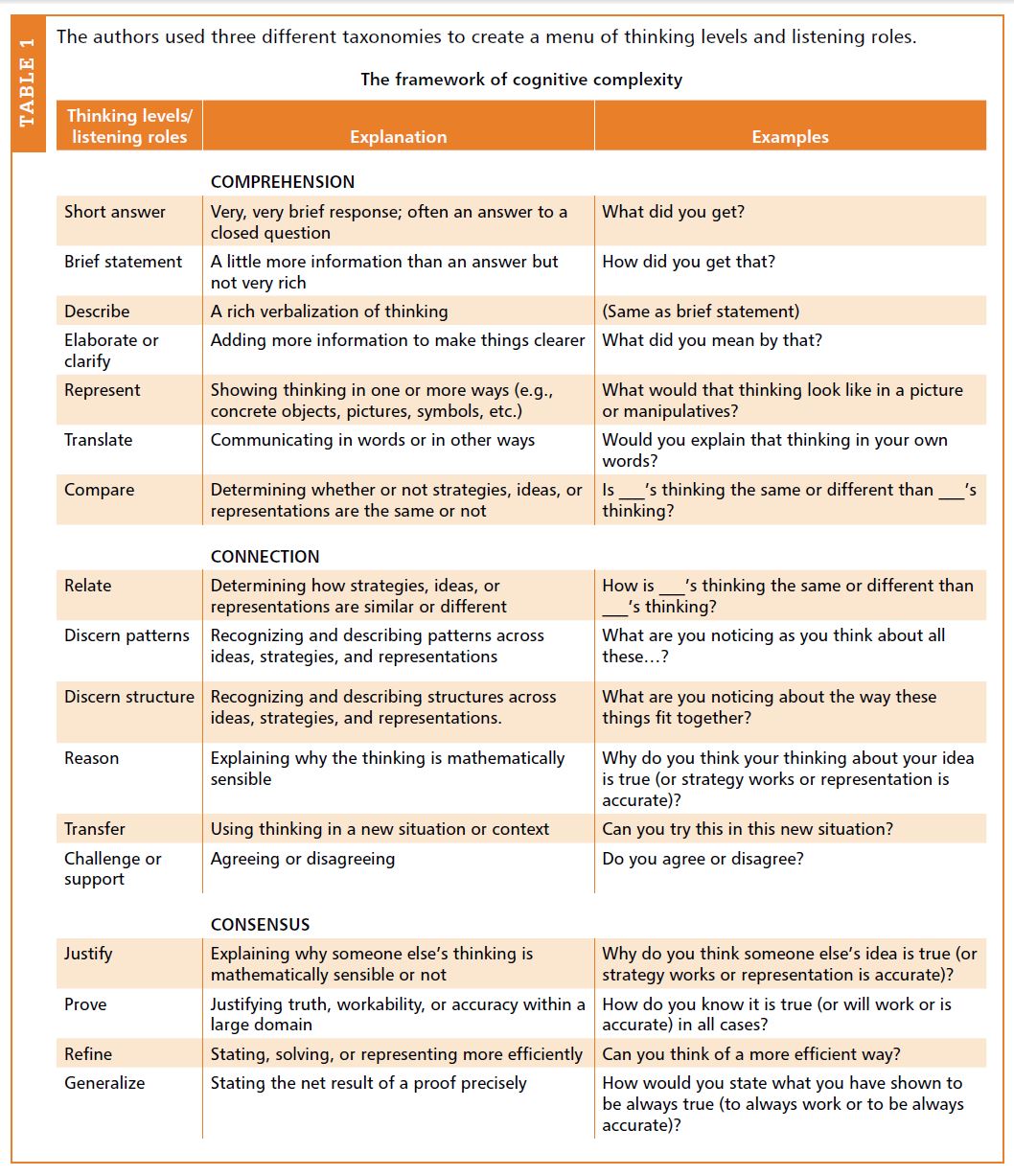
We know that today’s math instruction is very different from our experiences as students. The teacher takes on the role of the facilitator, presenting students with problem solving scenarios and using students’ sharing as the primary means of promoting understanding. It is the discussions about students’ thinking that serve to engage students in the mathematics and advance the learning of the whole class…often relying on the assumption that the rest of the class is actively listening and engaged. In the March 2017 issue of NCTM’s Teaching Children Mathematics, Damon and Kim Bahr’s research based article “Engaging All Students in Mathematical Discussions” cautions against this assumption, and offers four strategies to ensure that students are actively listening and consistently engaging in discussions.
1. Tell students what to listen for. Specifically assign a listening role to your students; give them a purpose for listening to their classmates’ thinking. The authors used thinking levels to create a “menu of thinking levels and listening roles” categorized by teacher’s purpose.

2. Teach them how to engage in the listening role. Tell students the listening role, model it and provide them with wording and sentence stems. Many of the accountable talk stems referred to in the blog post “How to Get Your Students Talking About Math”could be connected to specific listening roles.
3. Call on listeners to respond during and after sharing. Students can be asked to respond while the sharing takes place at those key points that will help all students move towards a deeper understanding of the learning goal; this can occur in the midst of a student’s sharing or after. Students may be purposefully called on to respond in their listening role, or it may be random.
4. Have routines in place. The authors identify three main reasons why listening students will not or can not respond: (1)the task may be inappropriate, (2)the shared understanding was too difficult for listeners, or (3)the students were not listening. If the task was inappropriate, it may lack personal meaning for students, not capture their interest, or it may not be developmentally appropriate. In the case that the students did not understand what was shared or chose not to listen, they can use routine responses, such as, “I’m sorry, I was listening but I don’t really understand what you said. Could you explain it another way?” or “I’m sorry, I wasn’t listening. Would you mind repeating what you said?”
These 4 four strategies, in conjunction with established math norms and an effective classroom management plan, will dramatically impact student engagement in mathematics discussions.